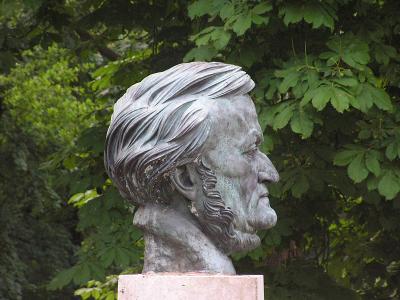An introduction to The Valkyrie
Part of Richard Wagner’s Ring cycle, The Valkyrie tells an emotional story, filled with brave heroes, cunning gods and mythical swords. If you like epic sagas such as The Avengers, Game of Thrones and Lord of the Rings, we think you’ll love The Valkyrie.
Video
Wagner’s greatest work is his Ring Cycle, also known as Der Ring des Nibelungen. Consisting of four operas (Das Rheingold, Die Walküre, Siegfried and Götterdämmerung), Wagner pioneered a new form of epic music drama known as Bühnenfestspiel (stage festival play), which would feature a running story told across three days of the Bayreuth Festival, with a prelude the night before.
This prelude, Das Rheingold, was titled a ‘voraband’, or ‘preliminary evening’, setting out the world of the Ring and the events that lead up to the start of the Ring cycle – but don’t worry, The Valkyrie is the ‘start’ of the Ring cycle proper.
The Ring cycle revolves around the titular ring, which is forged of the Rhinegold. It tells us of the danger of greed, with the vying for possession of the ring, leading to disastrous consequences for almost everyone.
The four operas can be performed as a whole or as stand alone pieces. The characters are based on Norse Gods, with the overarching story of Wotan, the King of the Gods stealing a cursed ring from dwarf Alberich, which is similar to the famous fantasy novel Lord of the Rings. Each individual opera has their own epic tale of love, family and power, all tied together by Wagner’s beautiful, romantic score.
It's part of a wider story
Video
The Ring Cycle has its basis in Norse myths and sagas, drawing from the Poetic and Prose Eddas, the Nibelungenlied and Þiðreks saga, amongst others. Telling the tale of the gods’ (particularly Wotan’s) machinations, Der Ring des Nibelungen leads to the end of the gods themselves in Götterdämmerung (‘Twilight of the Gods’, another word for Ragnarök).
In the Ring Cycle, Wagner uses the Old Germanic names for the various gods that appear, meaning we have Wotan instead of Odin, Fricka as opposed to Frigga, Donner instead of Thor, etc.
The Valkyrie draws most strongly from the 13th Century Saga of the Volsungs, a tale of the rise and fall of family descended from Odin himself, which becomes intertwined with the cursed ring Andvaranaut – sound familiar?
Detailing the beginning sections of the saga, The Valkyrie adapts the story of Sigmund (Siegmund) and Signy (Sieglinde), simplifying it and adding some incestuous themes. This leads to the conception of the prophesied Siegfried, who is one of the saga’s greatest heroes…
Has a basis in Norse sagas
Video
Wagner is renowned for his extensive use of leitmotif (a reoccurring musical motif used to musically represent a person, theme, place or thing) in his works, most notably in his Ring Cycle. While by no means the originator of the practice, he famously attributes leitmotifs to many important characters, events and themes within these fours operas, with hundreds of leitmotifs being found within the music.
This, of course, means The Valkyrie is filled to the brim with them, with notable examples being the ‘Sword’ motif (used to represent the mythical sword Nothung that Wotan thrusts into a tree), the ‘Love motif’ (that develops as Siegmund and Sieglinde’s relationship does) and the ‘Storm’ motif (first appearing at the very beginning, as Siegmund stumbles in from the storm that pursues him).
Of course, while those motifs are some that repeat themselves within The Valkyrie, Wagner’s notable use of leitmotif moves beyond just the self-contained operas – reappearing in other places in his Ring cycle, meaning his grand scale piece uncovers itself more and more with repeated listening.
Laden with leitmotifs
Video
Balancing a traditional interpretation of the mythological and setting with a 21st Century point of view, expect a ground-breaking new production to frame one of opera’s most beloved stories.
Keep an eye out for the ever watching ravens of Wotan skulking around the stage. Huginn and Muninn, whose names translate to ‘Thought’ and ‘Memory’, are always watching Siegmund and Sieglinde, reporting back to Wotan on their actions.
Richard Jones brings the world of the Nibelungen to life
Video
Video

